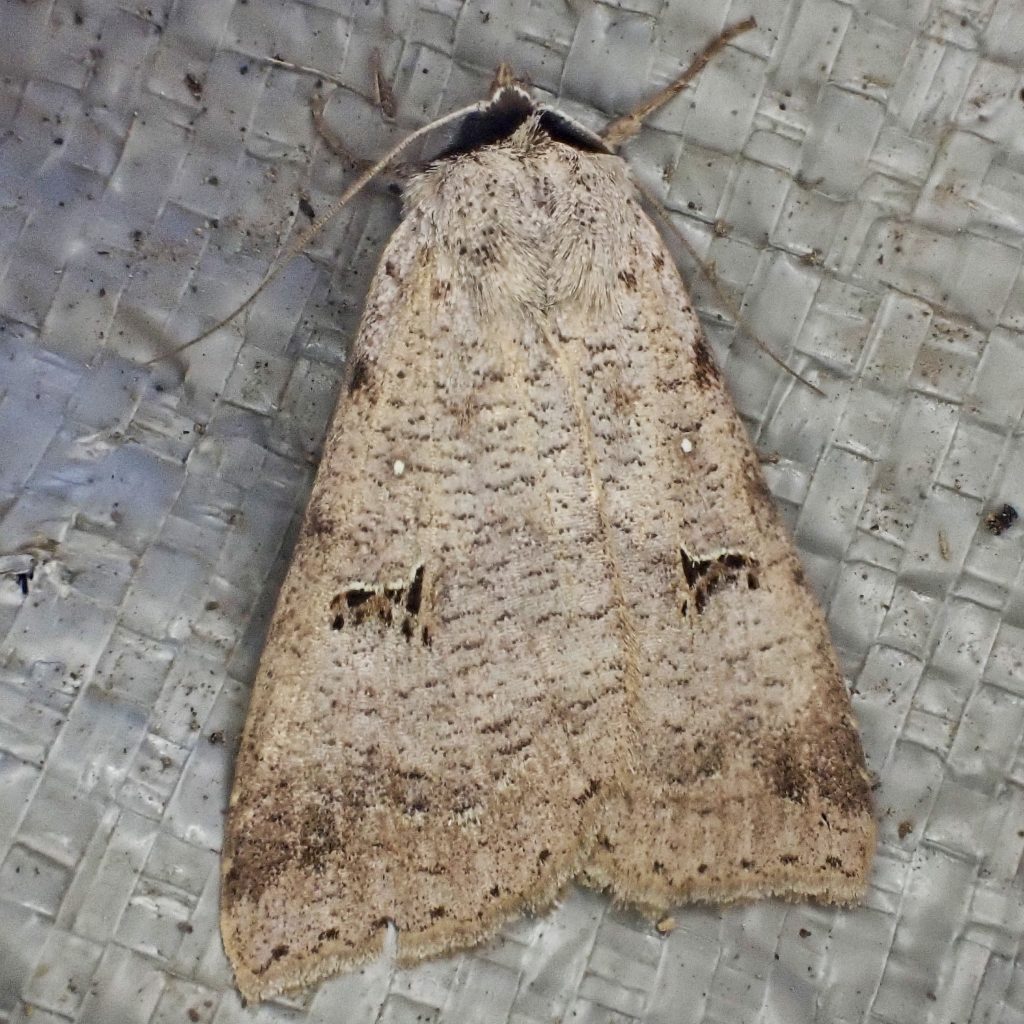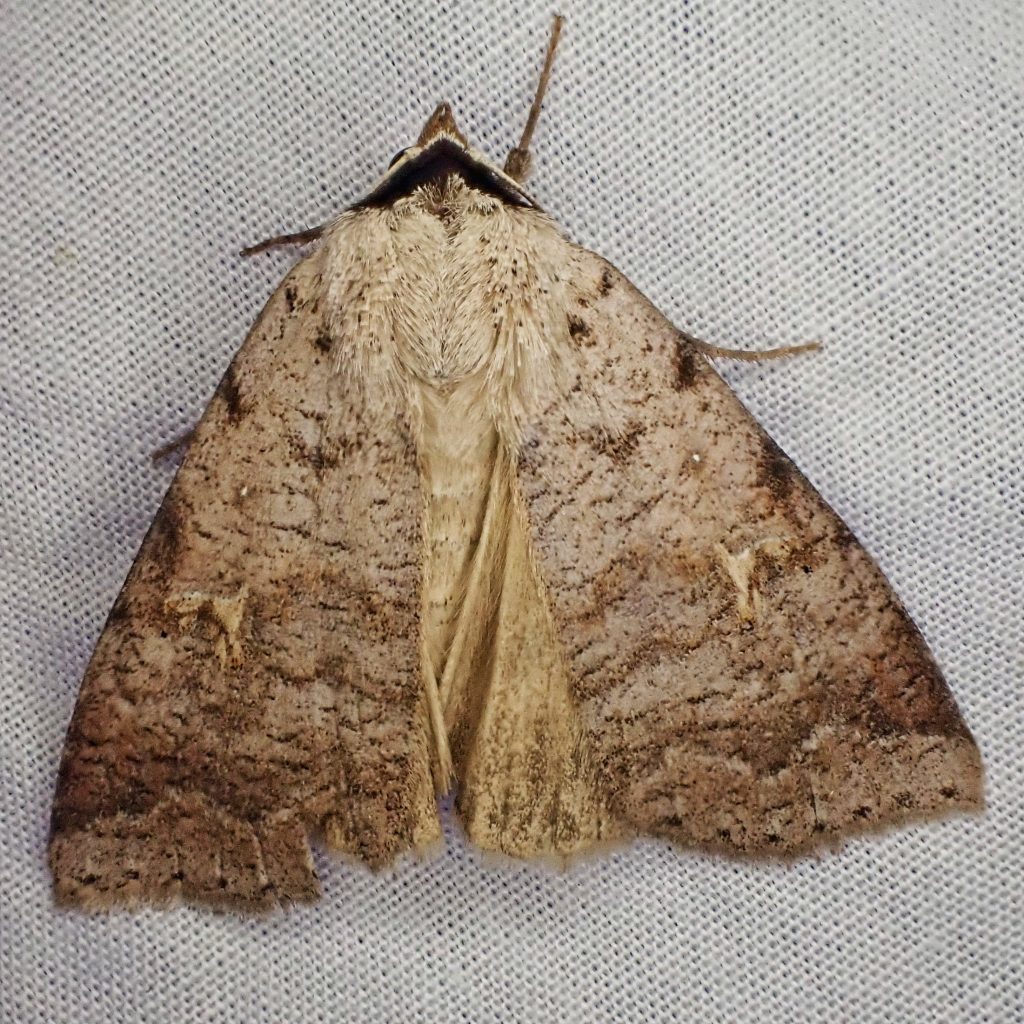
I was excited when this moth came to my lights on the trip to Mt. Adams, because I knew I’d never seen it before and it was so striking and distinctive that I figured I had a good chance of getting a positive identification. I couldn’t find a match in ‘PNW Insects’ so, as I did with the Xestia oblata (Rosy Dart Moth) that I found on that trip, I decided to page through the Moth Photographers Group site and see what I could find. It seemed to have a tiger moth (Erebidae) shape which reminded me of the morphology of the Drasteria, so I started there. Unfortunately I didn’t get as lucky as I did with the Xestia, and I went the wrong way in the catalogue. After about twenty minutes I reached the end of the Erebidae, and my eyes hurt from staring at the little thumbnail photos, so I made another round of my lights.
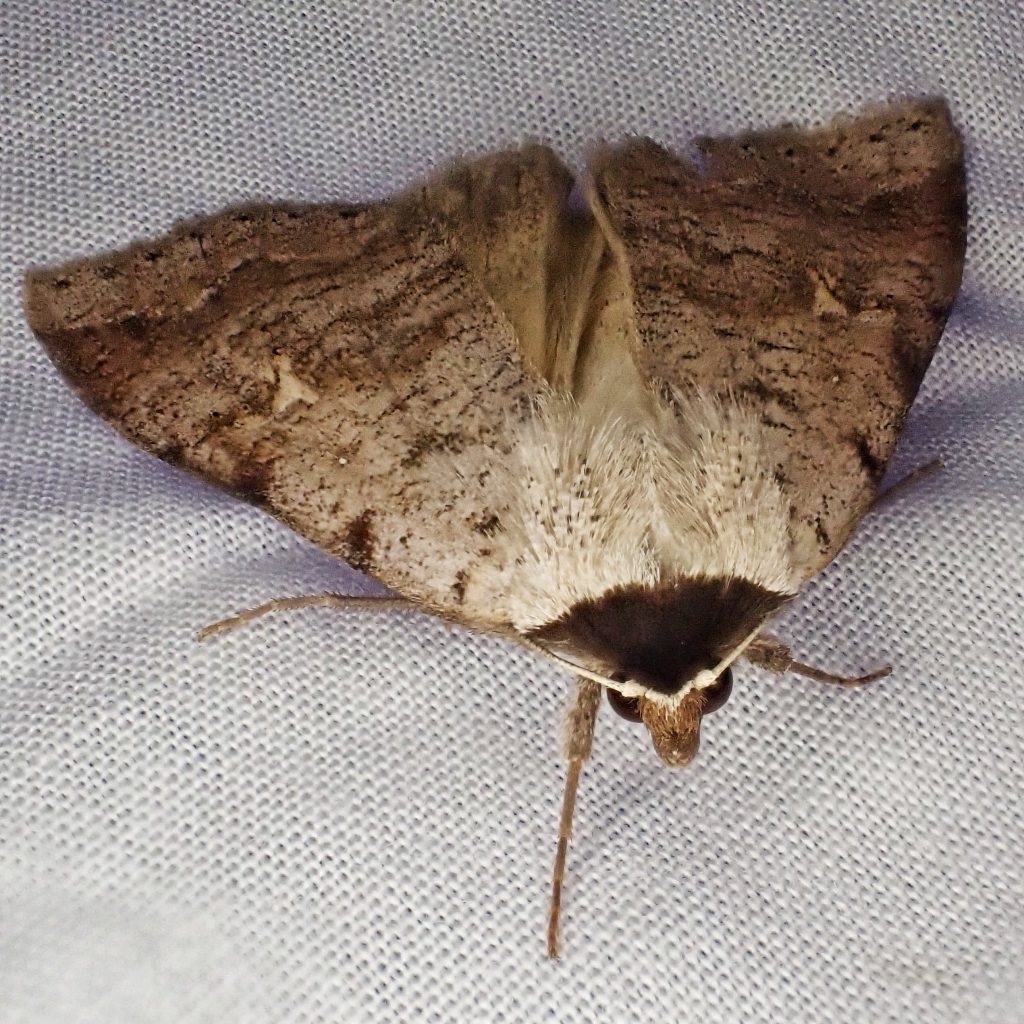
And found another one of these moths! This one was very quiescent, and I really studied it in the light of the headlamp, becoming convinced that it would be found with the tiger moths. But I realized that the size had somewhat affected my judgement of what it might be, and that it looked more like a Hypena than a Drasteria. I was tempted to start there on my next go around, but realized that just being methodical would be my best bet, and was rewarded by finding Lygephila victoria (which sometimes goes by the common name of Victoria’s blackhead, a name that sounds more like a prom night problem than a moth, which may be why it isn’t used much) almost immediately when I resumed my perusal. And since L. victoria is the only Lygephila in the US, and the patterning and extent of the black on the collar were spot on, I knew I had my identification.
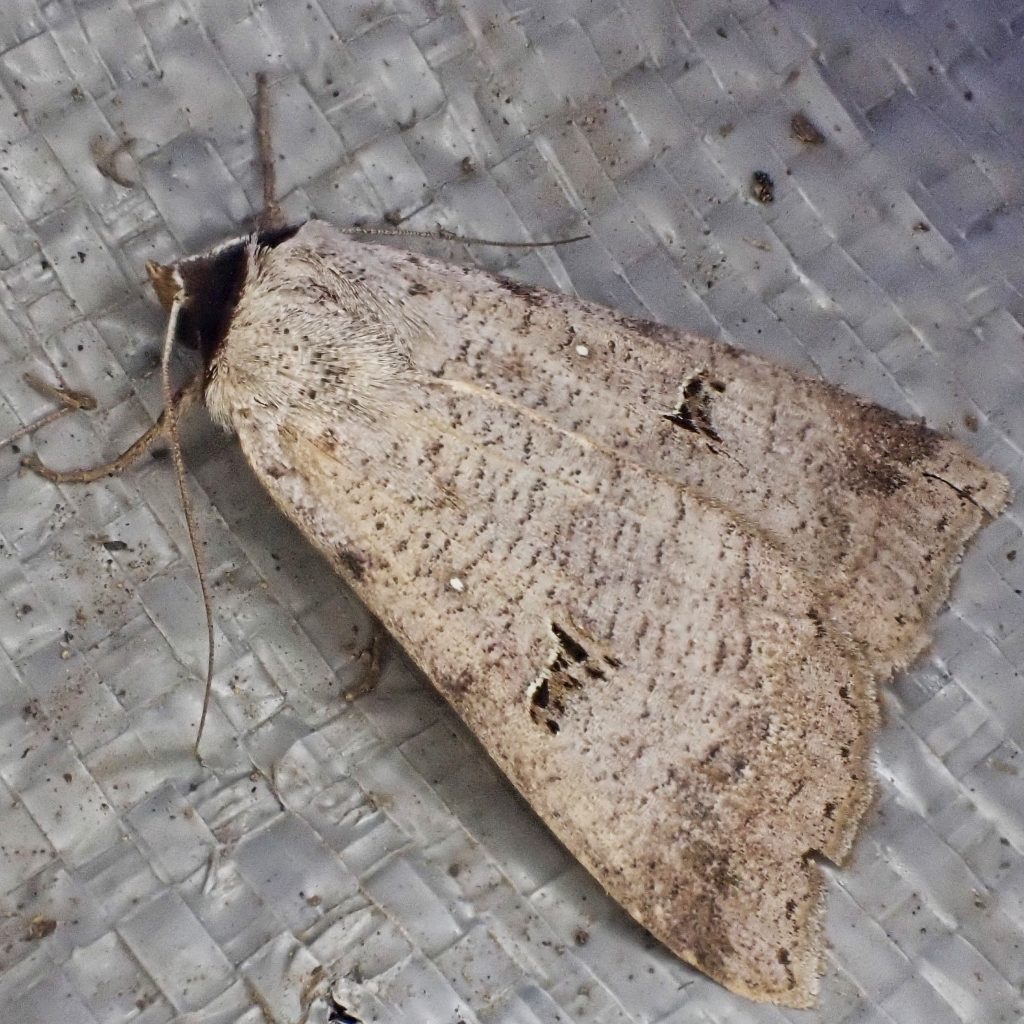
Description– “ A medium-size (approx. 4-5 cm wingspan) lavender-pink or pink-grey moth with slightly falcate forewings. The thoracic collar is jet black. The forewings have few markings, confined to some darker brown shading near the costa where the antemedian, median and postmedian lines would meet it. The reniform spot may or may not have black markings. The hindwings are light yellow-brown, shading darker along the outer margin. Antennae simple. Sexes similar.” Lygephila victoria – University of Alberta Museums Search Site
Similar species– The Noctuid moth Anicla infecta has a much smaller, narrower black ‘collar’.
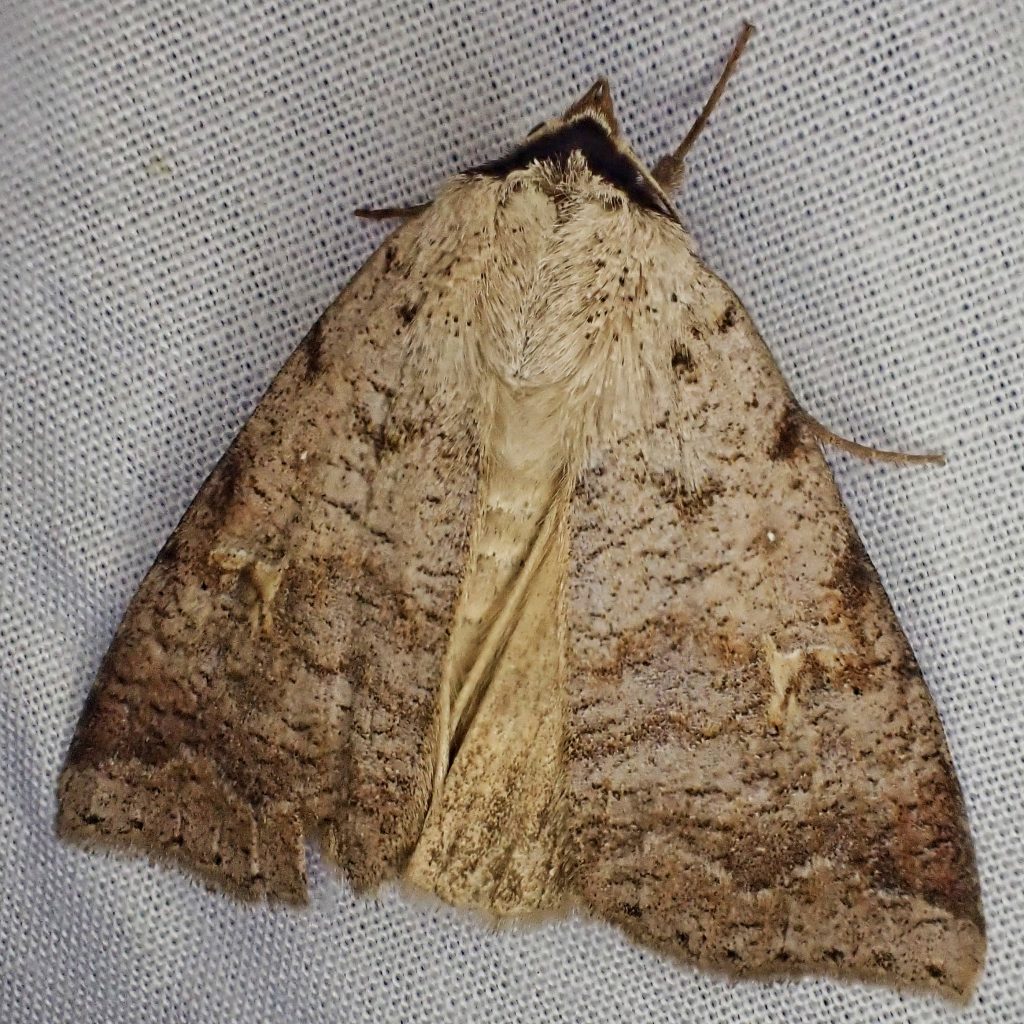
Habitat– “This species is widely distributed in mountain or forest habitats throughout much of western North America, and is common in moist forest habitats throughout the Pacific Northwest. This includes coastal rainforests and mixed hardwood forests west of the Cascades, mixed hardwood-conifer forests in the high Cascades, and mixed conifer or ponderosa pine forests east of the Cascades.” PNW Moths | Lygephila victoria
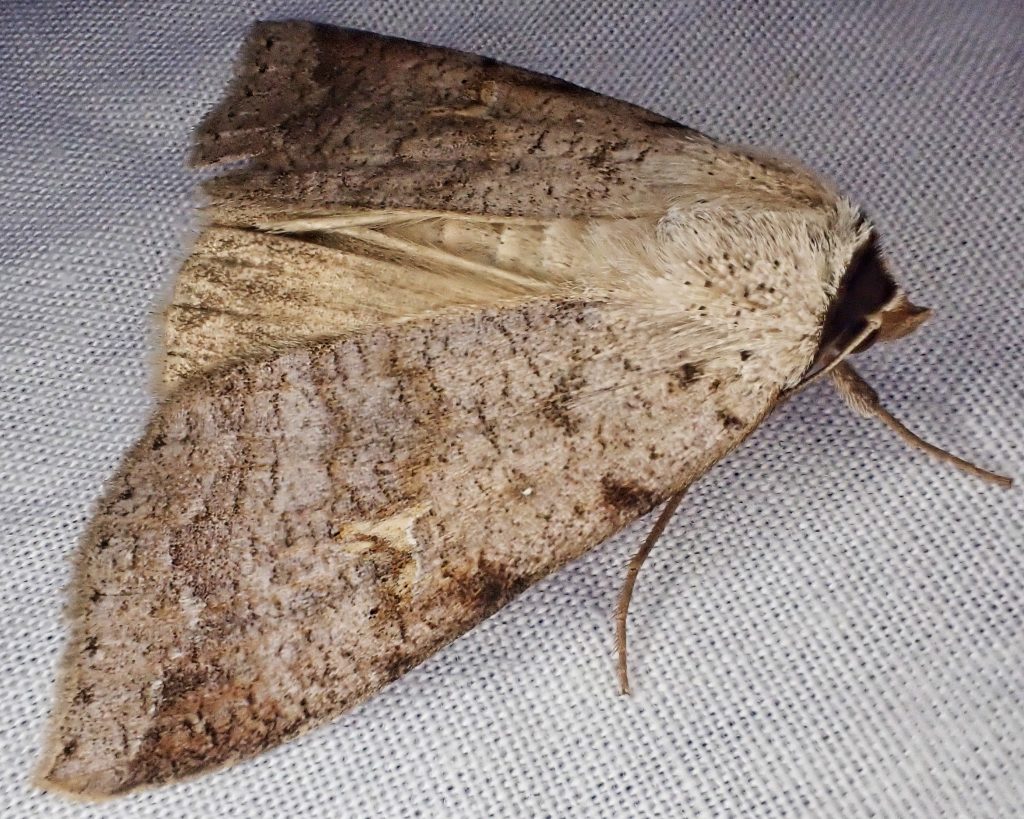
Range– “This species occurs in western North America. It is distributed southward from our region to southern California, Arizona, and west Texas…Lygephila victoria is widely distributed in forests throughout the Pacific Northwest at least as far north as south-central British Columbia. It is found on both sides of the Cascade Mountains. East of the mountains it is found in southern British Columbia and northern Washington, northern Idaho, and the Blue Mountains. It has not been collected in southeastern Oregon or southern Idaho.” PNW Moths | Lygephila victoria
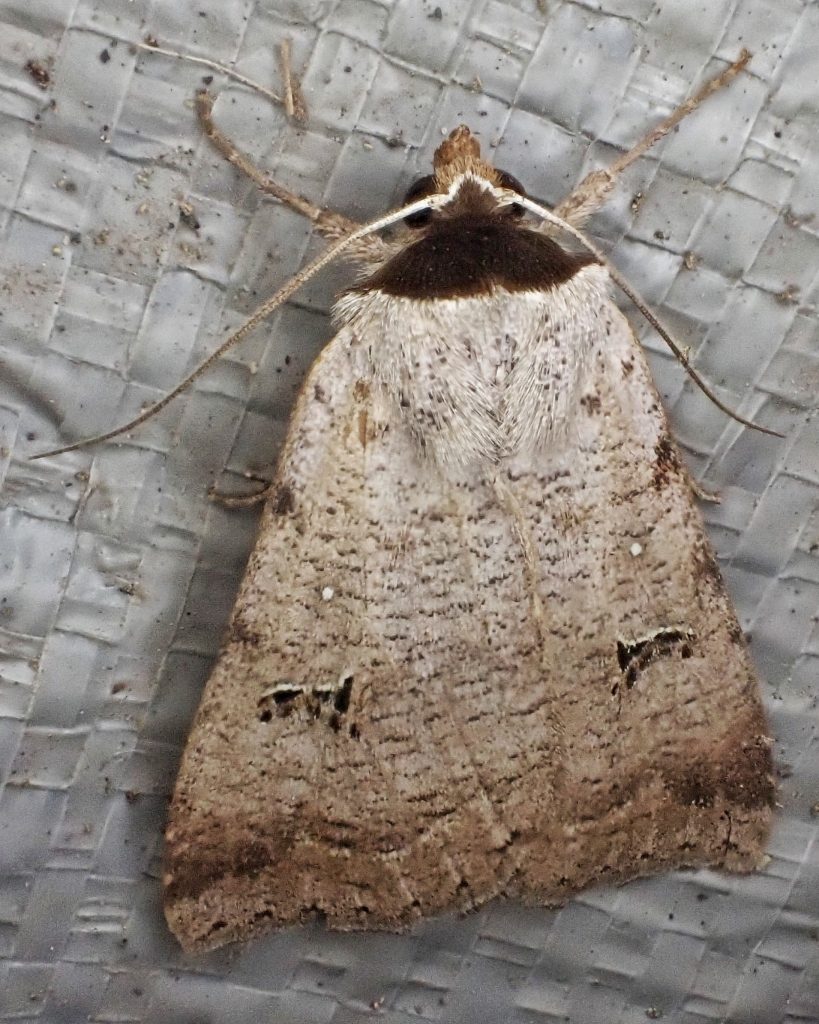
Eats– Larvae of “This species may be a foodplant specialist feeding on snowberry (Symphoricarpos spp.) in the Caprifoliaceae according to Powell and Opler (2009), but J.C. Miller reared larvae in the laboratory on lupines (Lupinus spp.) in the Fabaceae.” PNW Moths | Lygephila victoria
Eaten by– Presumably a host for parasitoids in Hymenoptera and Diptera, and probably preyed upon by insectivores of all classes, but I can find nothing specific for this species.
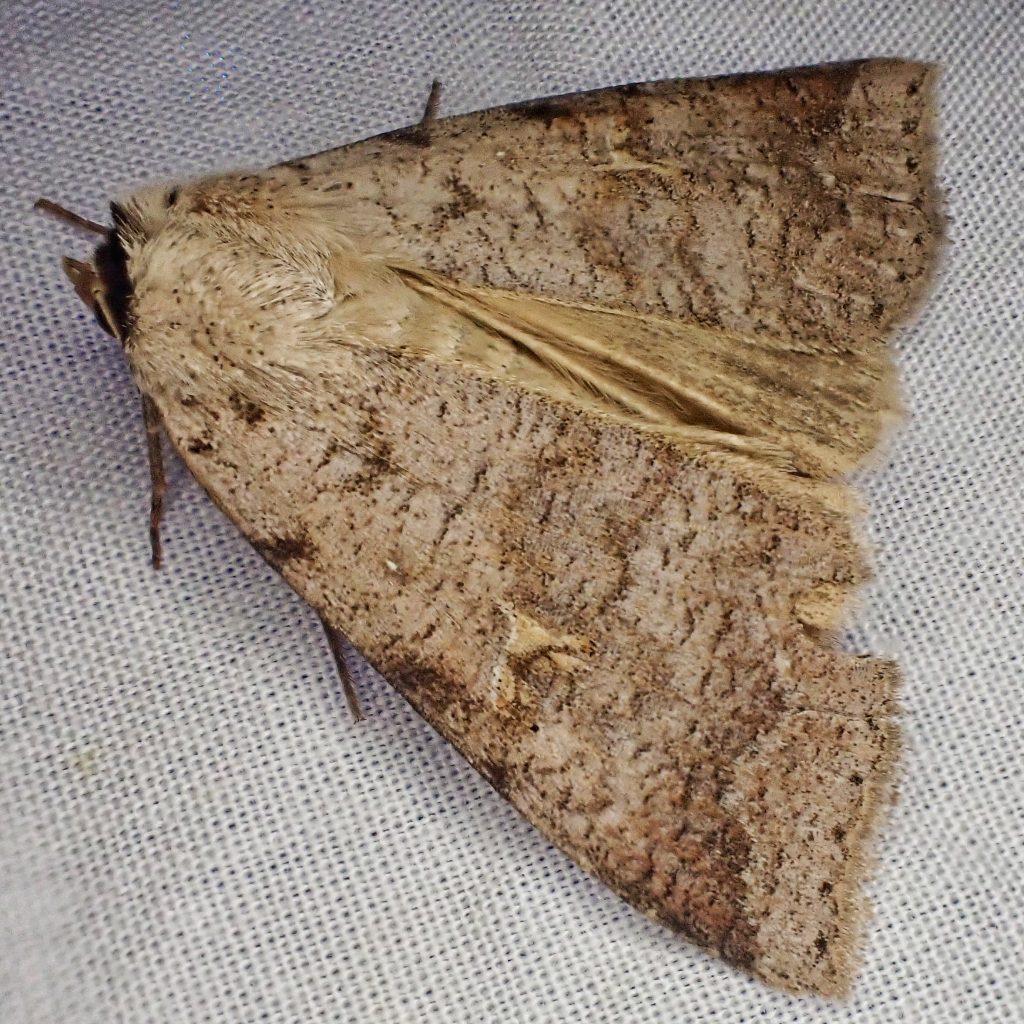
Adults active– “Adults are found during the summer, with most records in our region from late June until late August. It is nocturnal and comes to lights.” PNW Moths | Lygephila victoria
Life cycle– Univoltine; life history is apparently unknown.
Etymology of names– Lygephila is from the Greek words for ‘lover of twilight’, which refers to many members of this genus flying at dusk, although the ones that came to my lights arrived well into the night. The specific epithet victoria would seem to honor a woman, but I can’t find where, or even if, Grote explains which Victoria he refers to.
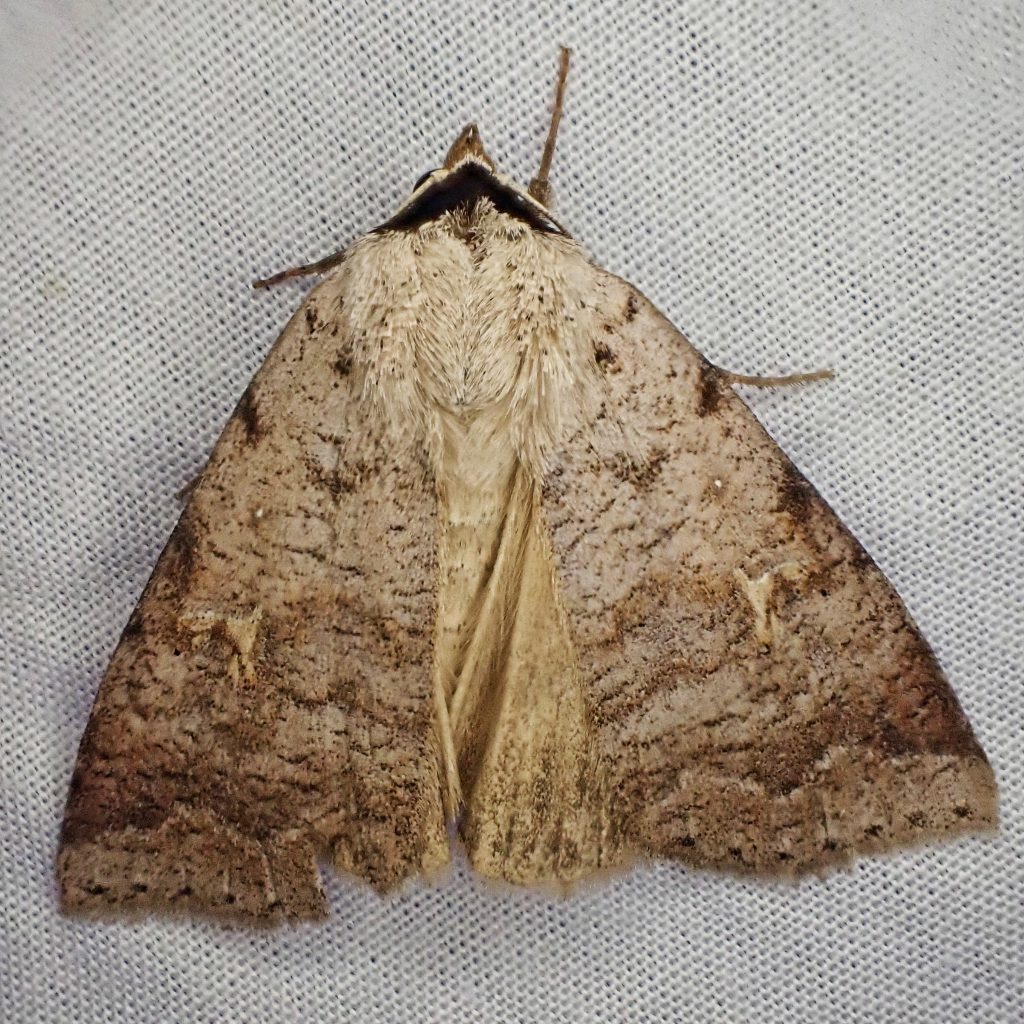
PNW Moths | Lygephila victoria
Lygephila victoria – University of Alberta Museums Search Site
Species Lygephila victoria – Hodges#8563 – BugGuide.Net
http://mothphotographersgroup.msstate.edu/species.php?hodges=8563&state=PNW
